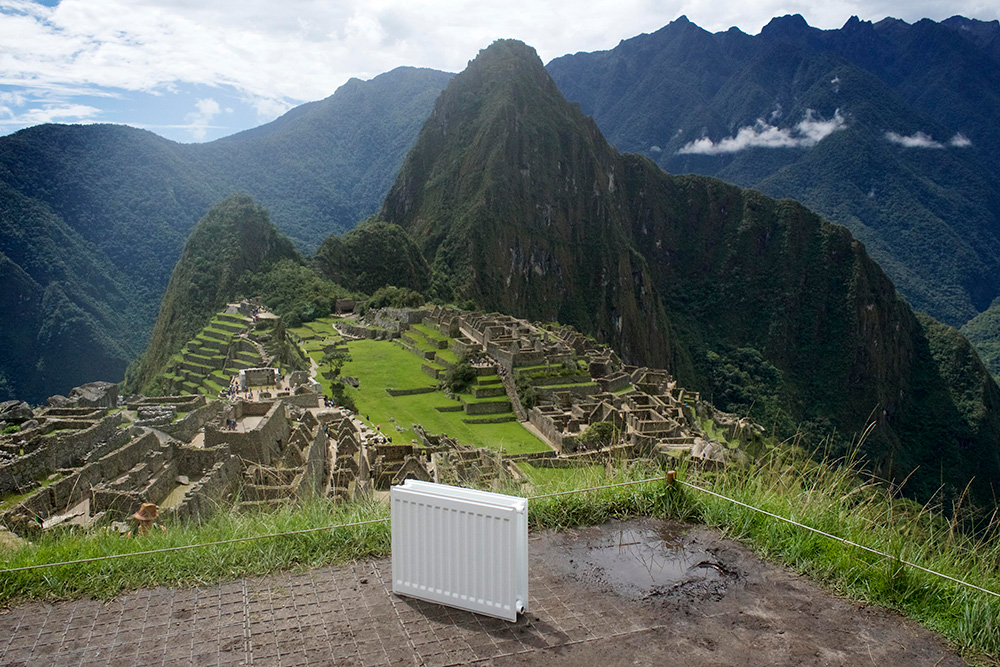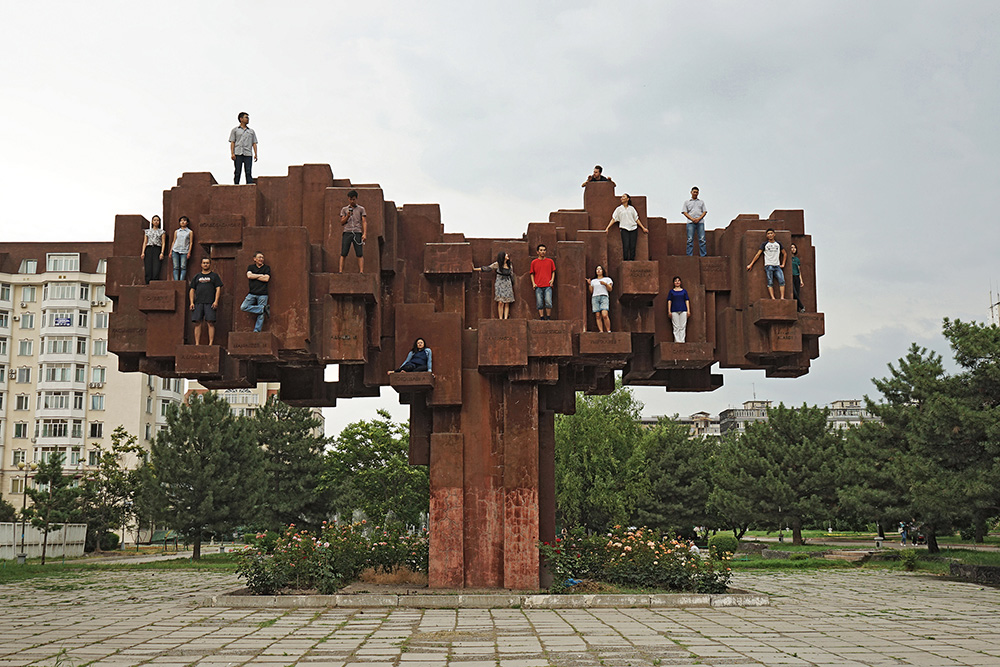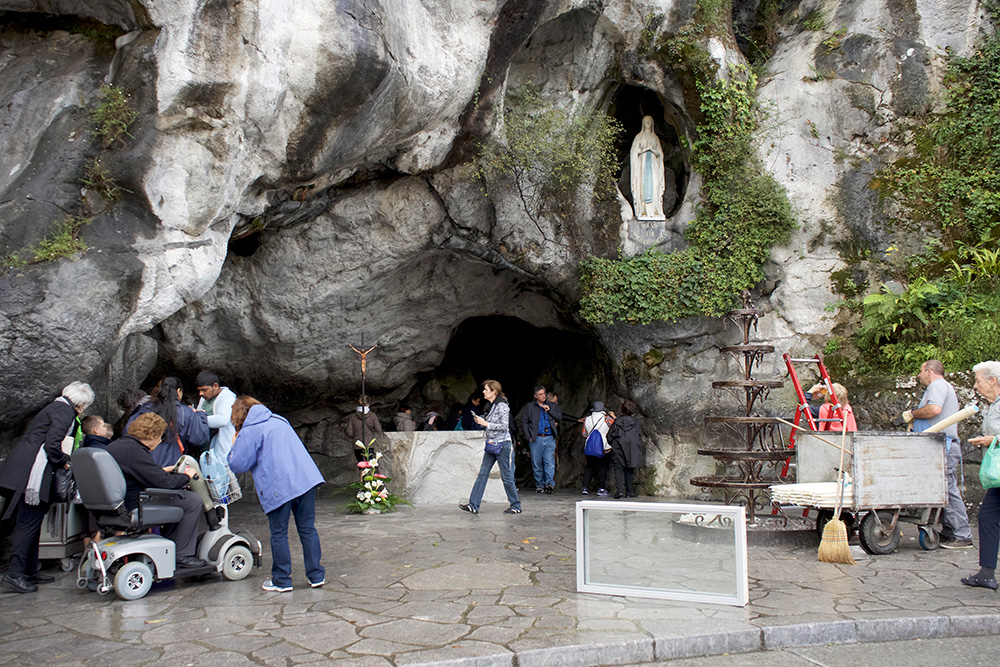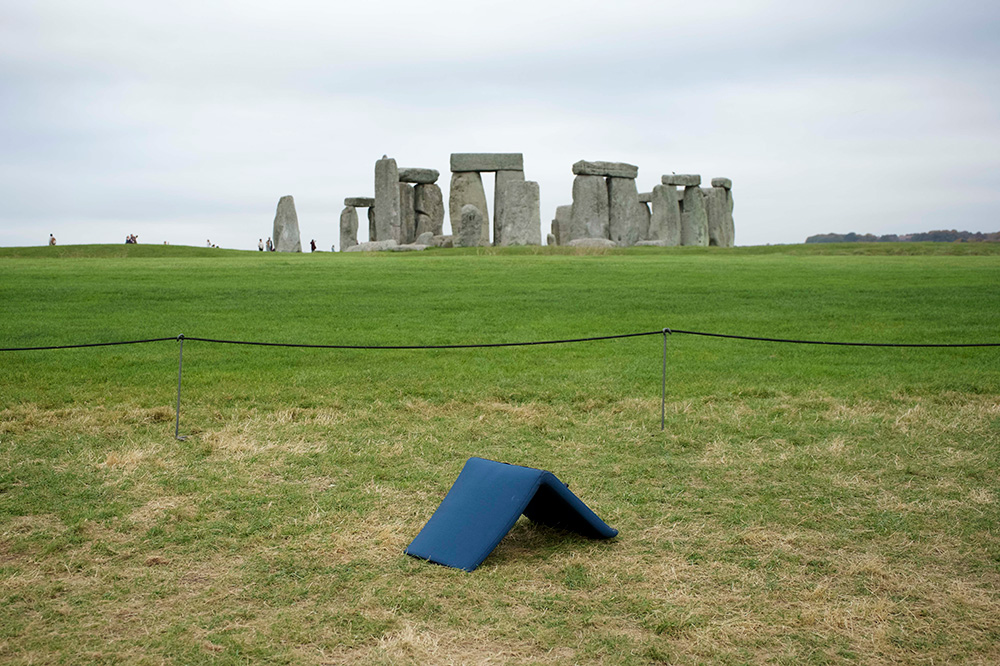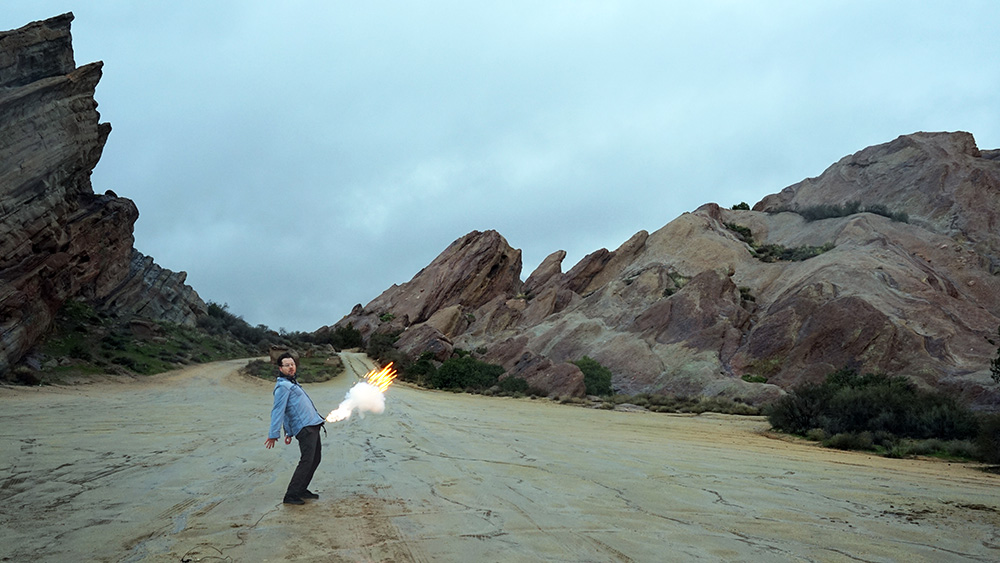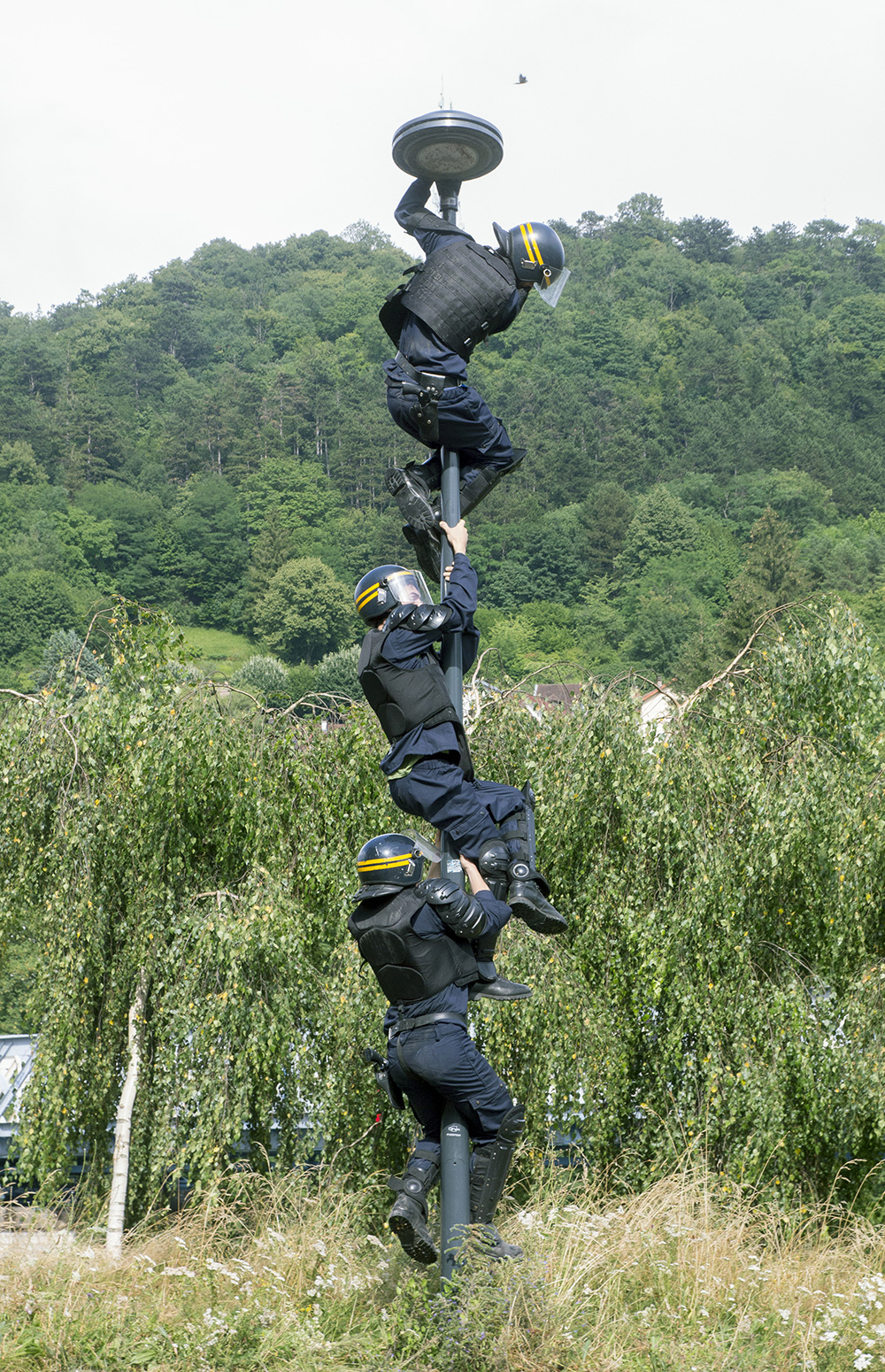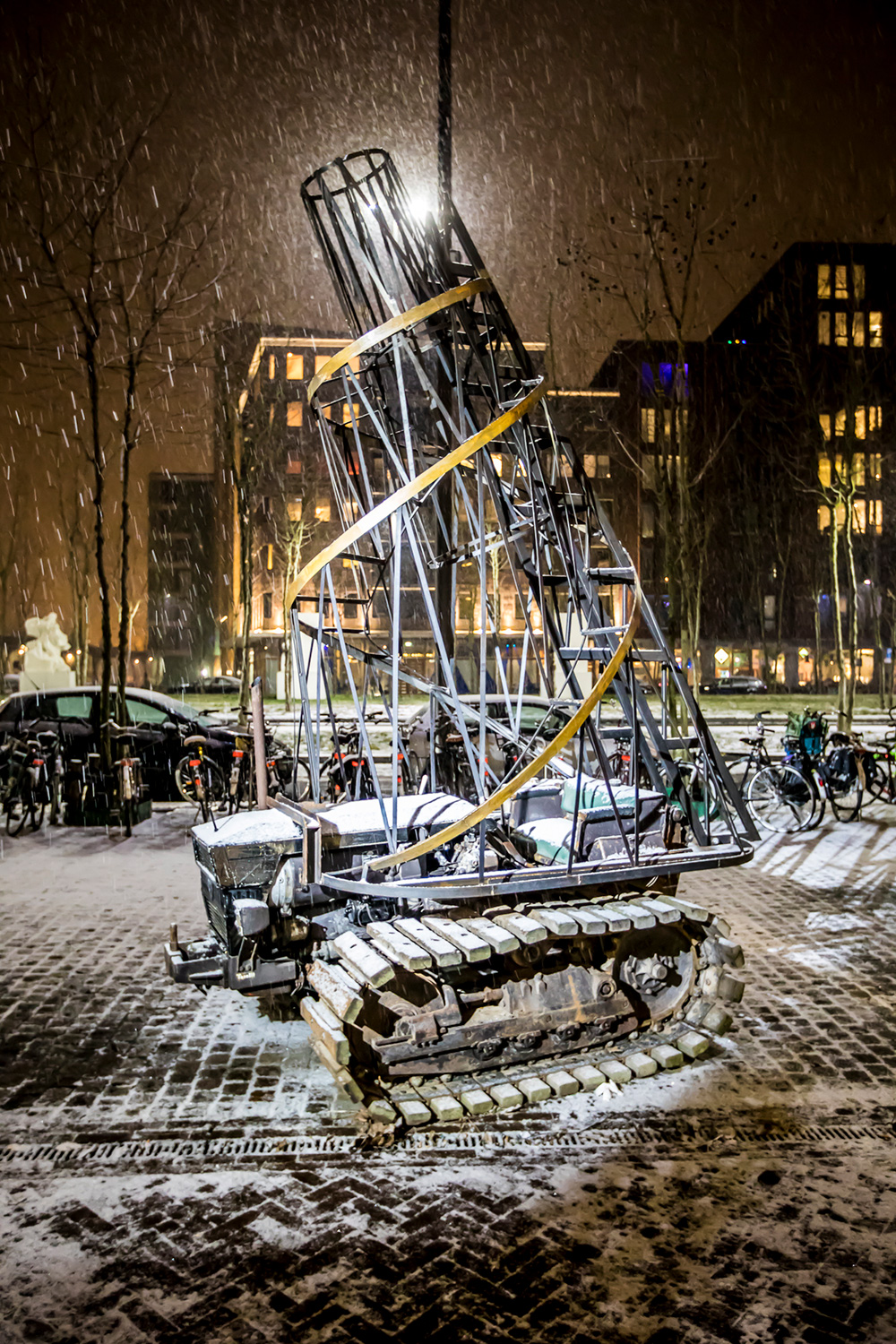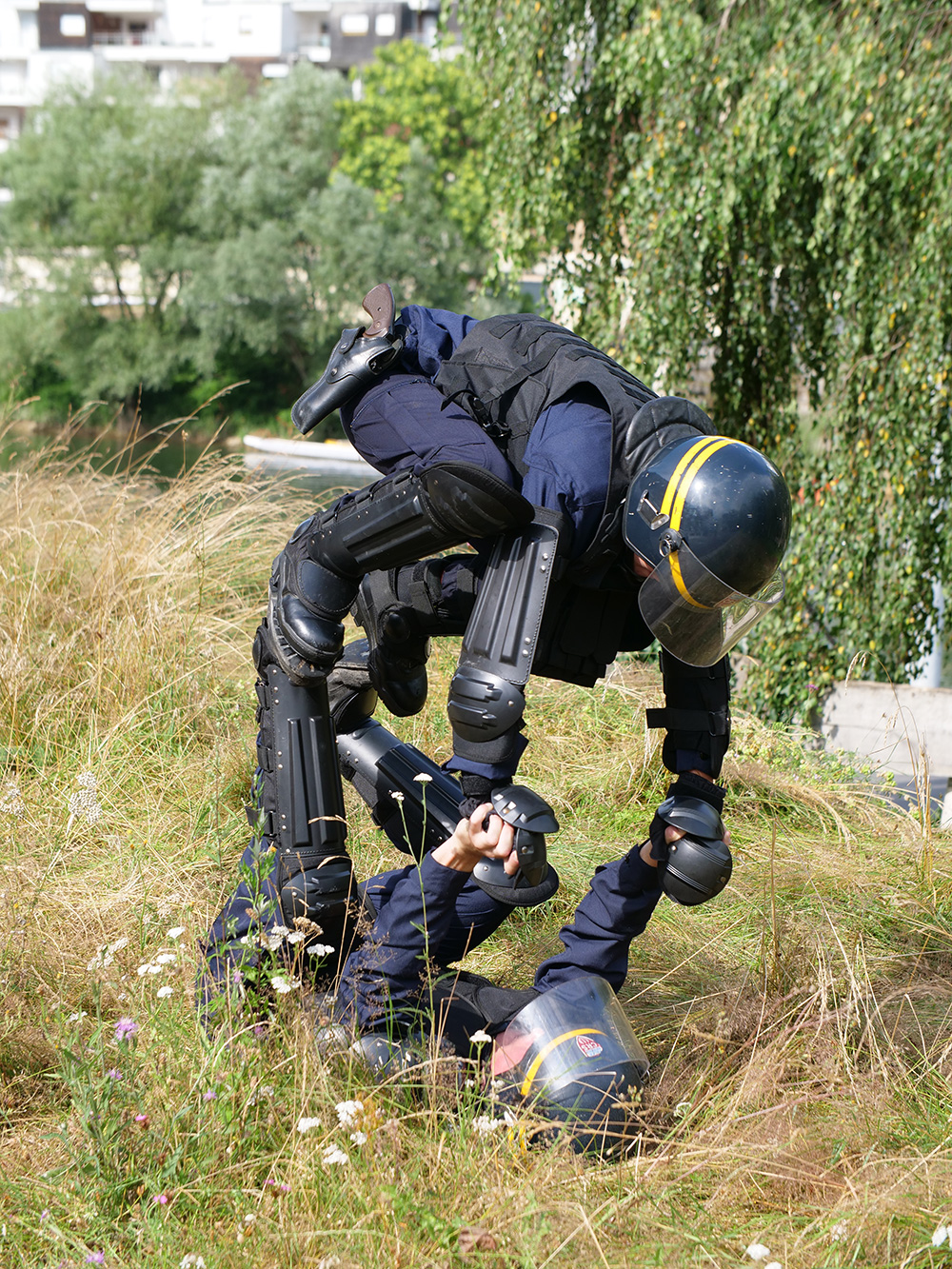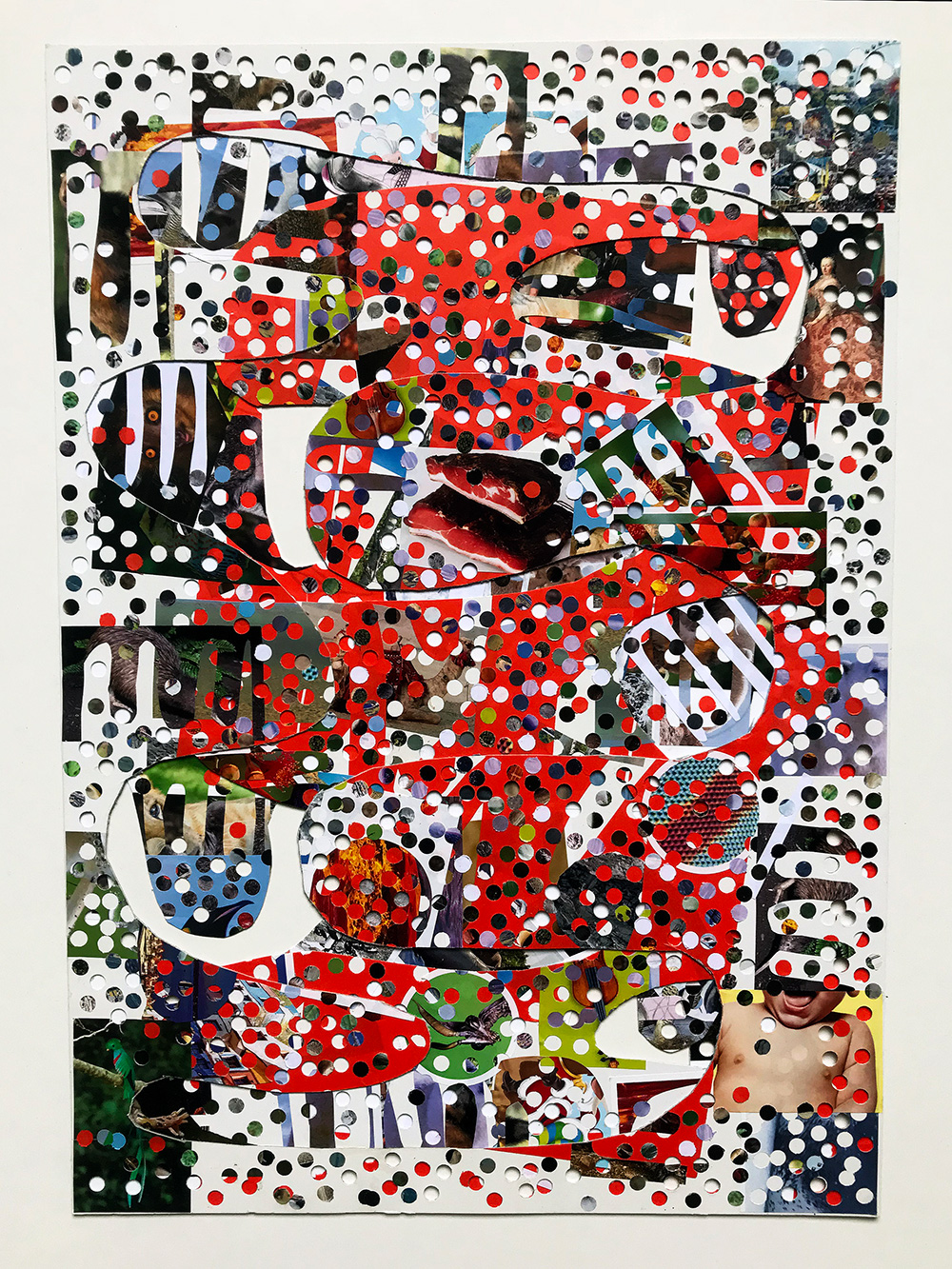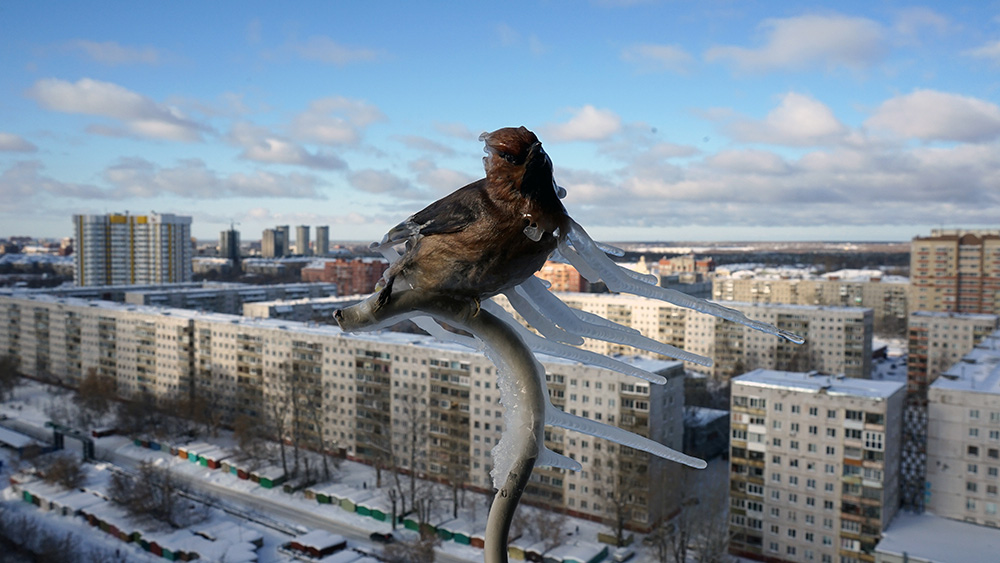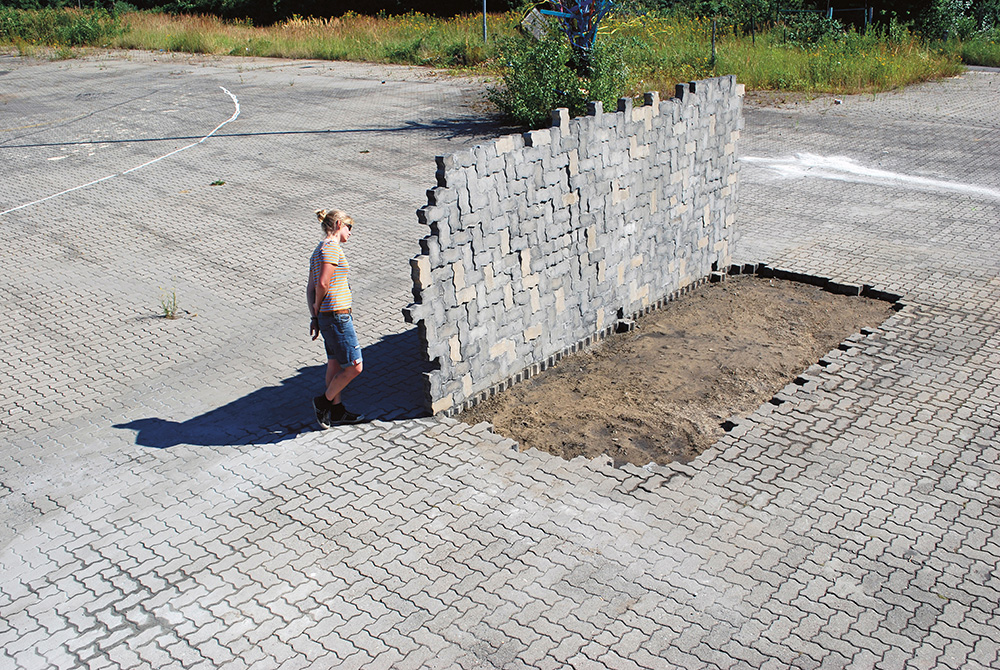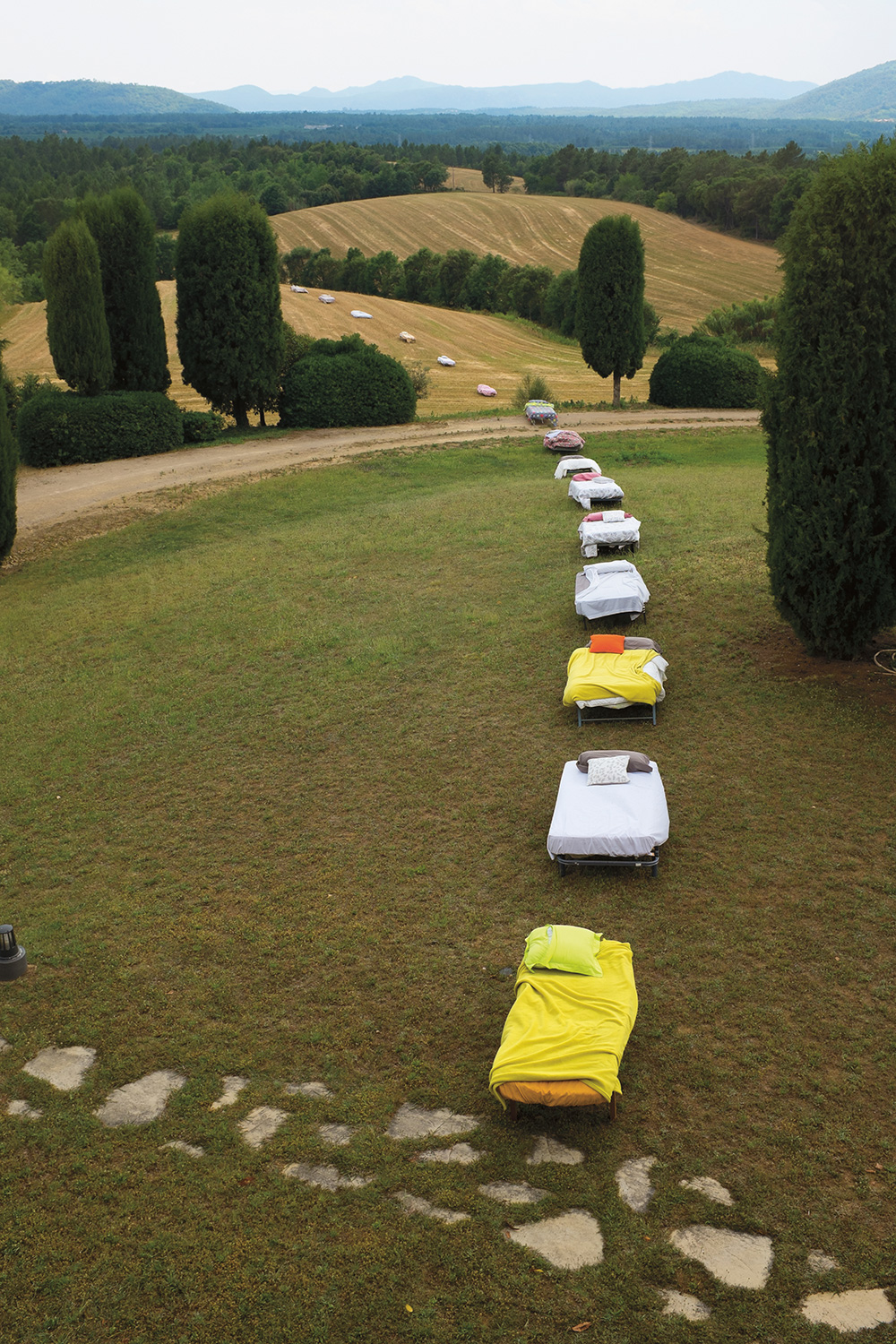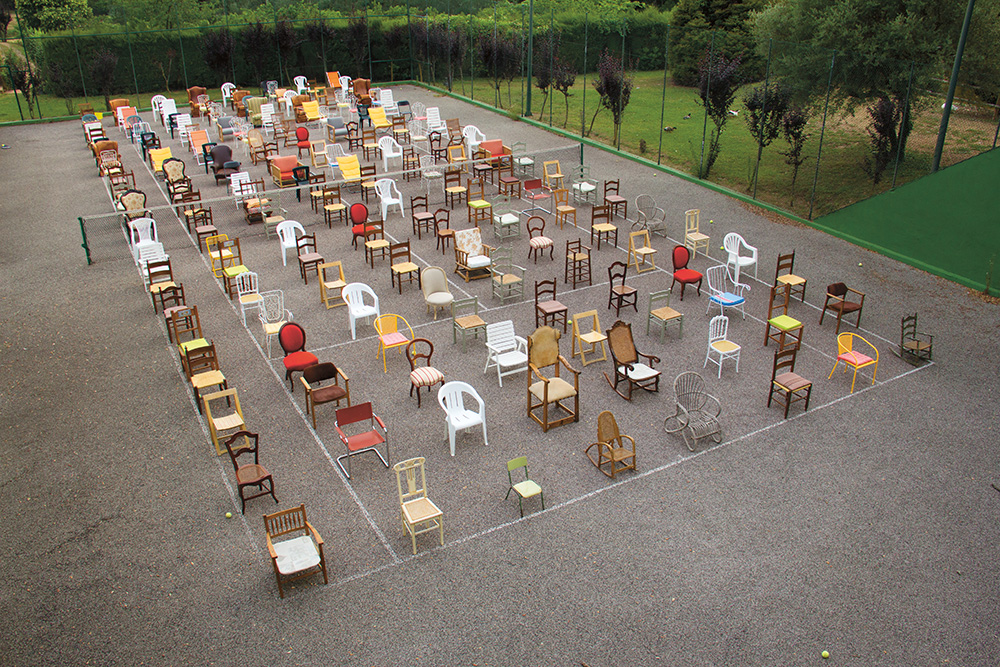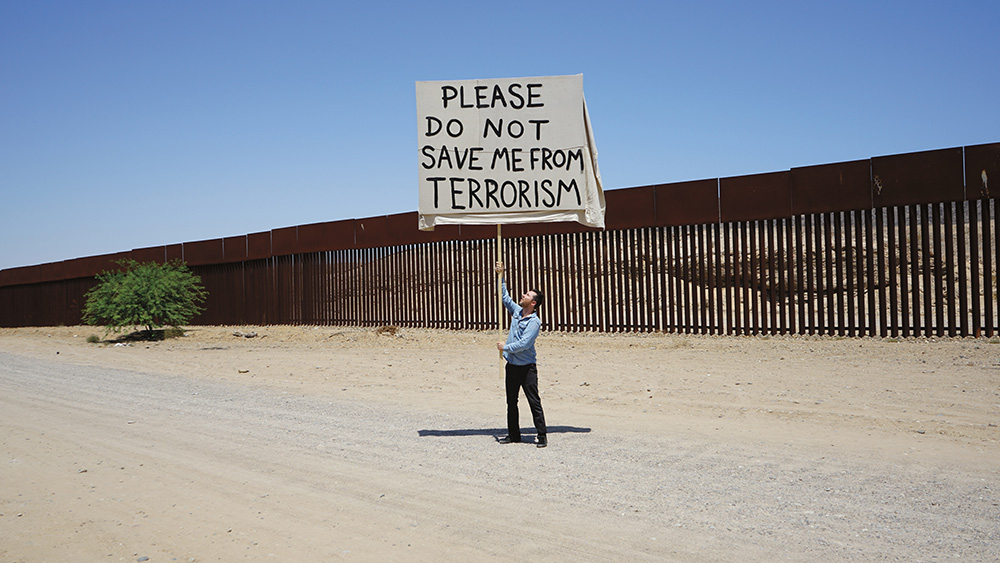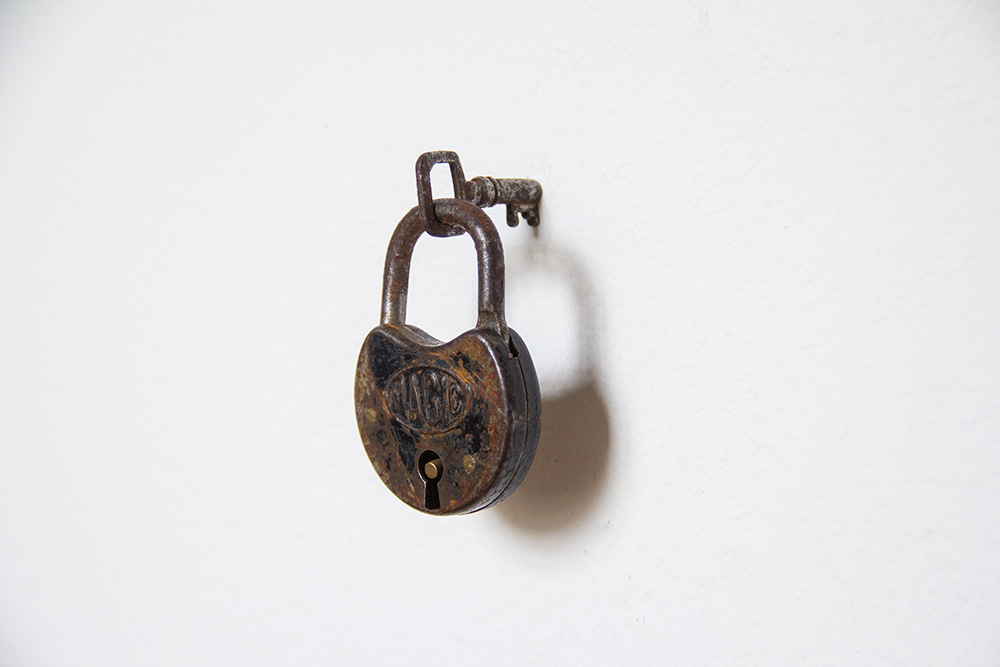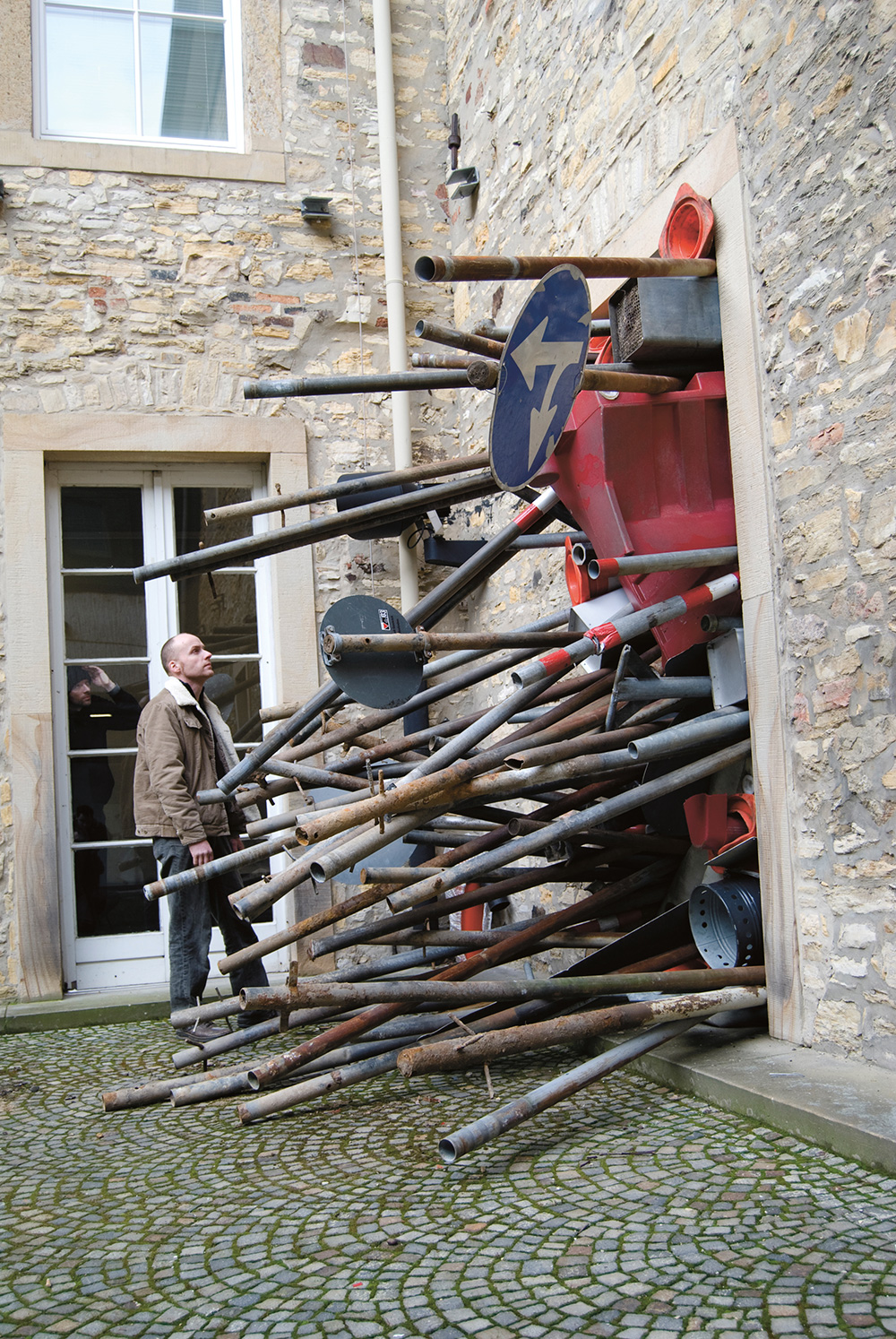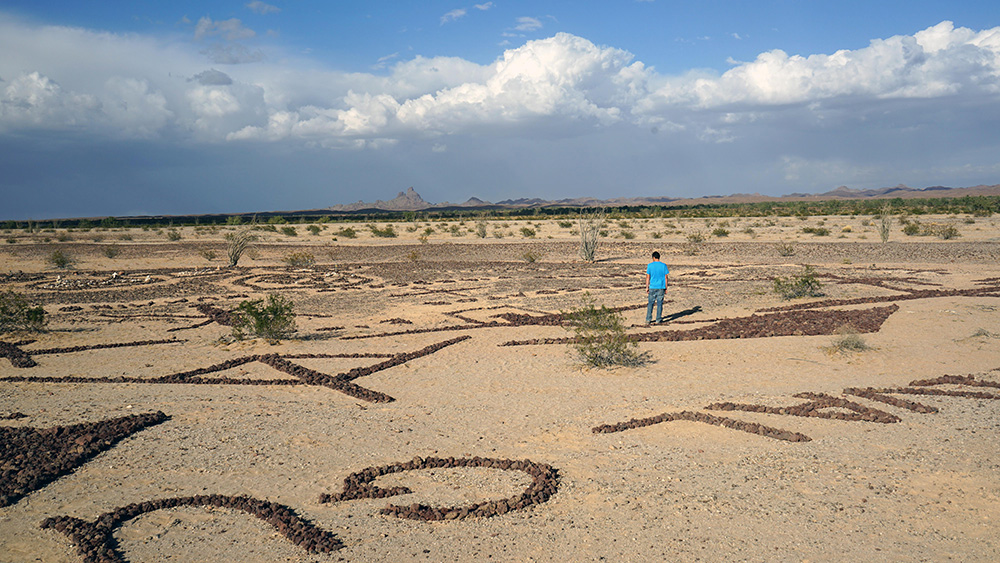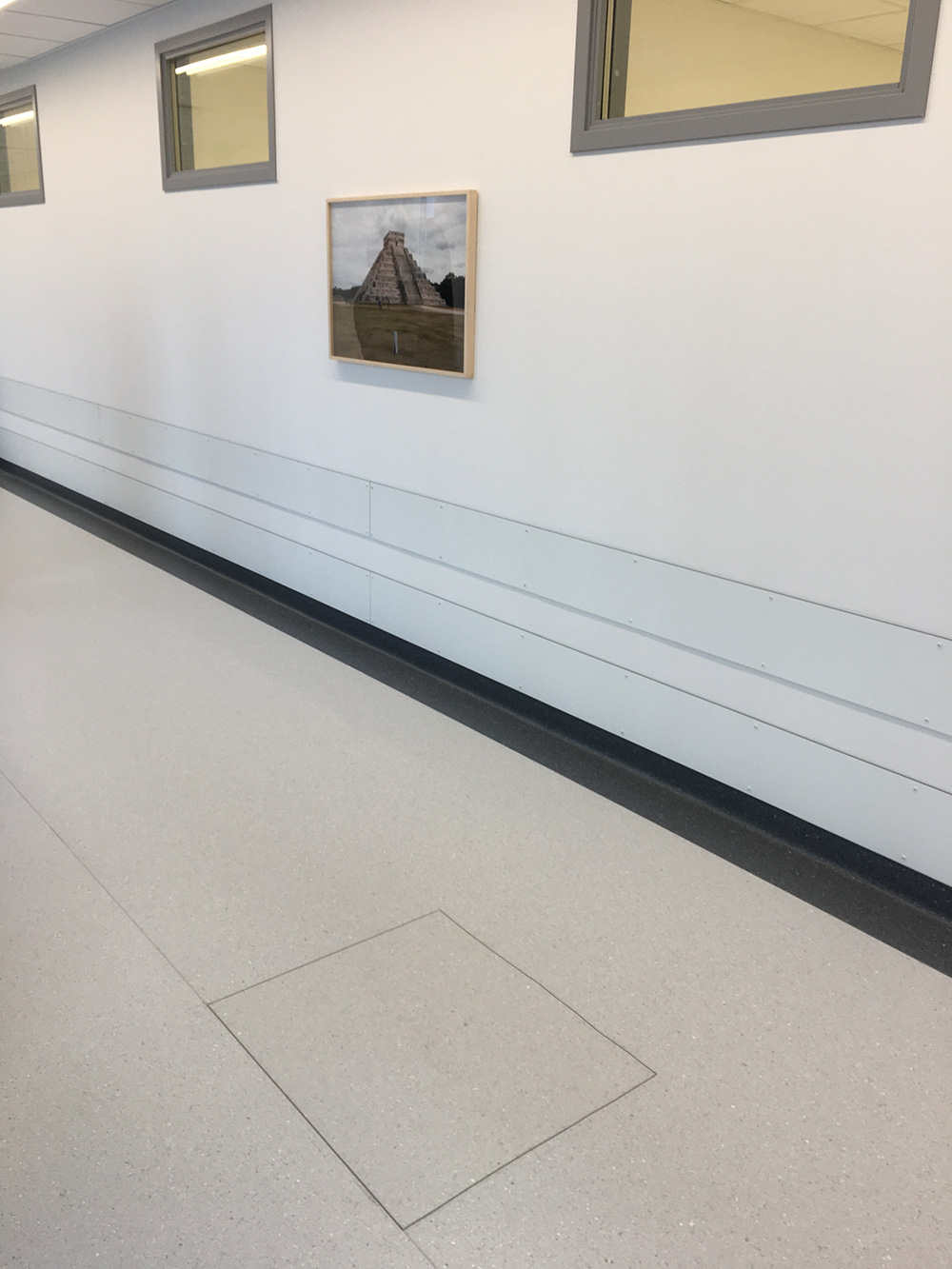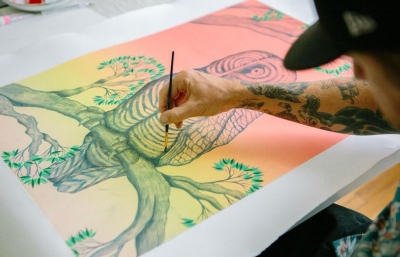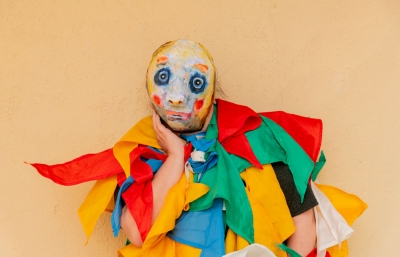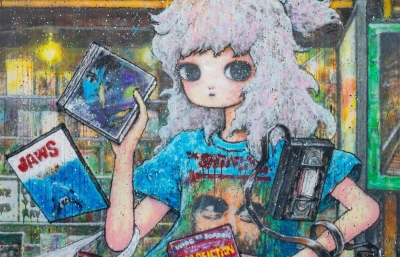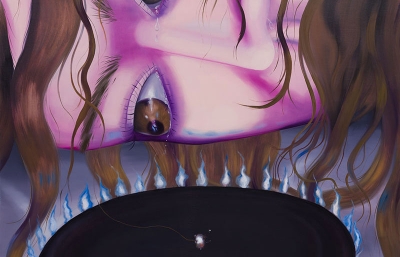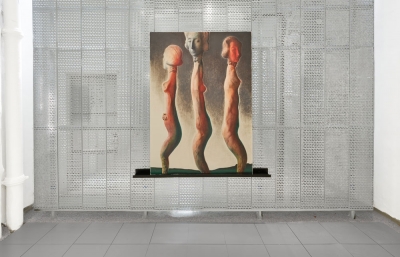Brad Downey is what most people would call an enigma. However, in the same way that an ordinary object can spawn a 2-hour conversation about the nature of art, Downey finds and delivers meaning without the trappings of representational imagery. Whether it's a dead, frozen bird in Siberia, cobblestones flipped up alongside their original resting place, or using a mural budget to repair a neglected public housing complex, the Kentucky-born artist refines jokes and feelings down to their core forms. He humorously pokes fun at authority in a wide array of media, it's part performance, part installation, part sculpture, sometimes a bit of painting, and oftentimes in public. Each project and object speaks for itself, so in the opposite of that spirit, we wanted to hear Downey describe a bit of his practice in words. Read on below.
Eben Benson: So let’s start with your new book, Slapstick Formalism. When did this idea come together or has it been the style of your practice from the beginning?
Brad Downey: The book catalogs my art journey over the last 20 years. I decided to call it Slapstick Formalism. The word slapstick always made me think of little kids getting slapped with sticks after misbehaving, or the kind of laughter available to all people of any age or cultural background. For me, formalism is a kind of tidying up, this dry intellectual approach often empowers my objects to emit some deadpan comedic elegance. I always aim for my work to be on the side of thinking.
Do you consider your work juvenile or naive?
No, but I recognized quickly that the art world likes to weave deliberately confusing webs of historical references and convoluted art speak. I don’t like my work to put the audience in a state of “what the fuck does it mean” at first glance. It’s true that maybe some of the artworks look too simple or silly; like the placement of something where it’s not supposed to be, or a situation going where it’s not supposed to go. It’s like that Groucho Marx saying, “Gentlemen, Chicolini here may talk like an idiot and look like an idiot, but don’t let that fool you. He really is an idiot.”
When did you start making work in the street? How did that progress over time? Did you ever paint murals or more representational work?
In 1999 when I was kicked out of school in Atlanta, I carried a ladder and rubber hammer from my father’s garage to my local Shell station and smashed the “S” out of the large, lit up sign. That was maybe my first serious public artwork.
A few years ago I was commissioned to make a mural for the "Big City Life" project in the government housing project Tormarancia in Rome. Instead of painting, I knocked on the doors of the families that lived in the building and asked them if they had any problems or uncompleted repairs in their apartments. Eventually, I decided to use my mural budget to solve these problems and make these repairs. The exterior wall was left blank. I titled the work "Fiscal Shifts and Problem Solving as Mural.”

I was surprised to learn you’re from the US, as most of your work is in Europe and has a certain European-feel to it. What keeps you in Europe more often?
Americans always ask me where I’m from, I guess they recognize me as American and it’s a way to check if I’m authentic or something. My first instinct is to lie, I can hear a voice in my head saying “don’t tell.” I guess I’m afraid they will go kill all my loved ones or something.
I was born in Louisville Kentucky, the same city that Muhammad Ali and Hunter S. Thompson are from. My father joined the military when I was one year old and as a result, I grew up on various bases throughout the USA, basically serving in the military up until I was about 15. As a kid, I realized I didn’t want the American dream.
When I was 17 I left the nest and moved to New York, later at 24 (in 2004,) I moved to Europe.
I wonder what it means that my work “feels more European?” What does it mean to feel more American?
Your street-work seems inherently uncommodifiable, have you seen attempts to use your work to send a message or sell something in particular?
We live in a world where people like to define the worth of a thing as the price of a thing. I usually try to make something for a specific place, a special thing for a special place. That thing might have a usefulness that can be lost if it’s simply uprooted. I always wish for my street works to commune with something real.
Of course, I don’t have anything against commodities, water is a useful commodity for example. Everything is anyways easily commodified including abstract things like time.
I sell my work all the time.
I make all types of things so I don’t feel the need to make buyable versions of things I made on the streets just for money or to hawk random consumer goods. Though this decision has always been a bad career move.
Photography is quite useful for solving the problem of making souvenirs of my street culture.
Do you find the art you enjoy as a viewer to be substantially different from the style you make?
I like a lot of things, so the answer is probably something like, no and yes.

Have you found that the increasingly bizarre global sociopolitical landscape has changed the way you go about what you do? Your work seems to be anti-authoritarian, to say the least, but does it change when that authority grows bolder?
I agree that we live in a bizarre time, but I’m not sure authority has grown bolder. From my point of view, authority has always been bold. I do feel that we live in a period of chaos, where trolls and shit posters rule both the political sector and the underground.
Previously, I took the approach that art has to assimilate the dark side to succeed. Maybe because I was raised on military bases I always imagined the artist as a soldier. But I'm not sure anymore why I should fight, it seems the men who come to power after a revolution are the same men who were in power before the revolution, western societies always reset to something striving for rationality, pragmatism, and prosperity.
Of late, in the light of all this technology worship, or maybe in opposition to it, I have the feeling I might be more useful trying to artistically create contact with invisible spaces outside of our everyday realm. Ritual, magical gestures, as well as attempting to create specific cult objects or amulets. This has grown out of my need for physical things in an increasingly digitalized world.
For example, I took this approach in a recent public commission from the Södertälje Hospital in Sweden. The goal for me as a sculptor was to charge mundane usual objects from the hospital with some abstract energy and potentially transform those objects into healing amulets. This was conceived for a hospital so I was trying to make work that might help people heal, or maybe psychologically escape from the hospital briefly. The work took me about two years to realize.
Can you describe this work in more detail?
Basically, I was offered two narrow nondescript corridors of a hospital. I decided to uninstall six modular elements from the hospital and carry them to places on earth where people had experienced miraculous healing. Once there, I photographed the objects. After returning the objects back to the hospital, they were installed near the photos of them at that special healing place.
For example, imagine a radiator in a hospital. Since it is winter now it is currently heating the hospital but this radiator happens to have gone on a pilgrimage to the Mother Earth temple in Machu Picchu. I experienced all the struggles of getting an 18- kilo radiator into Machu Picchu. I did this with six different objects, at six different locations.

How do you feel about street art these days? Have any of the folks you came up with gone into making more conceptual work in the street?
The reason I was drawn to working on the street in the nineties was the freedom of being able to make art without needing institutional support or official approval, while simultaneously having immediate access to a wide audience. This is something I still find interesting, but at that time I just landed in the street art scene.
These days, there are many more options. I mean, it's just in the last decade or so that people have gotten used to this idea that they can easily self-publish online. When I was in New York in the nineties studying film, if you wanted to broadcast your video, you had to jump through all kinds of hierarchy to get your stuff out there. Of course, the internet is starting to take on the qualities of a corporatized public space, but over the last few years I felt it was probably the most impactful open space. Now, like most places, the Internet’s open space feels more like a shopping mall. You follow the rules or you can't play.
A lot of the urban art folks I came up with in the '90s became really financially successful, which meant repeating themselves ad infinitum to sustain their PR engines and brands. I have the feeling now they were always aiming to please. At the very least, they were successful at amusing the sheep and the normies. I used to think they wanted to shoot the elephants in the room.

Tell us about your recent event in Miami during Art Basel. When did it come together and what were some of your favorite reactions?
I was invited to Miami by a gallery called Apollo based in Novosibirsk, Russia (the center of Siberia) to do a solo booth. Instead of working the usual way, installing my work in a fixed location, I decided I would bring the Overcoat Gallery from Moscow and exhibit exclusively there.
The Overcoat Gallery has been making parasite solo shows every week since 1995. The gallery is the brainchild of the performance/actionist artist Alexander Petrelli, who hails from Odessa, Ukraine but lives in Moscow. He wears a long coat, which he opens conspiratorially to show artworks pinned to the lining of his coat. These works travel with him to various exhibitions and the gallerist even sweats on the artworks. He is the oldest and longest running gallery in Russia.
I personally did solo shows in four art fairs, six commercial galleries and three museums in Miami during Art Basel.
Along with my exhibition Angels, Petrelli and I curated eight additional solo exhibitions which traversed all of the art fairs and satellite exhibitions. In six days we exhibited: Oleg Kulik, Gelitin, Anna Jermolaewa, EliKuka, Leonid Sokov (Rest in peace), Igor Ponosov and Sasha Shatokhina.
I think inviting him to the art fair made sense because, in my opinion, the art fair context transforms major galleries into mobile parasites. In the case of Petrelli, his "parasite" gallery becomes more authentic than the "real" galleries because it's his usual format.

